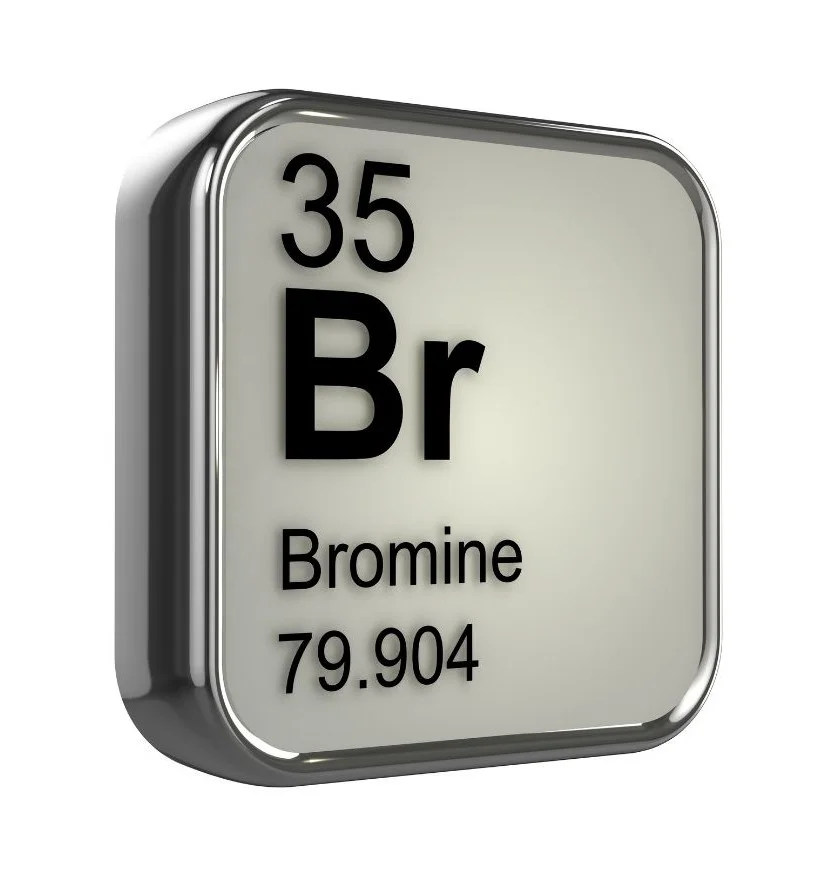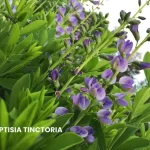Bromum, commonly known as Bromine, is a homeopathic remedy primarily known for its significant effects on respiratory symptoms, especially those affecting the larynx and trachea.
It is often indicated for scrofulous children with enlarged glands and a tendency towards spasmodic attacks.
Bromum is particularly suitable for individuals with a blond type of constitution and those who experience complaints from overheating.

Table of Contents
ToggleSOURCE INFORMATION
Scientific Classification
- Kingdom: Chemical
- Class: Halogens
- Group: Nonmetals
Origin and Historical Facts
- Bromine is a chemical element with the symbol Br and atomic number 35.
- It is a member of the halogen group and is found naturally in seawater, as well as in evaporite minerals.
- Historically, bromine has been used in various industrial and medical applications.
- In homeopathy, it is prepared as a remedy by potentization, a process that involves successive dilution and succussion.
- The use of Bromum in homeopathy is based on its observed therapeutic effects in individuals with specific symptomatology.
DRUG PATHOGENESIS
- Bromum exerts its effects primarily on the respiratory system, nervous system, and glandular system.
- It is known to produce symptoms such as respiratory congestion, spasmodic cough, hoarseness, and glandular enlargements.
KEY CHARACTERISTICS
- Most marked effects on respiratory symptoms, especially in the larynx and trachea.
- Affinity for scrofulous children with enlarged glands.
- Tendency towards spasmodic attacks.
- Sense of suffocation with excoriating discharges, profuse sweats, and great weakness.
- Complaints exacerbated by overheating.
- Tendency to infiltrate glands, leading to hardness without suppuration.
DETAILED ORGAN SYMPTOMS
MIND
- Delusion: The patient may experience a delusion that strange individuals are observing them from behind and may anticipate seeing someone upon turning.
- They may also display quarrelsome behavior.
HEAD
- Headache: Pain, known as megrim, is experienced predominantly on the left side of the head.
- It worsens upon stooping, particularly after consuming milk.
- Sun exposure and rapid motion exacerbate the headache.
- Sharp pain may be felt through the eyes, and dizziness can occur when crossing a stream of water.
NOSE
- Coryza: The individual may have a runny nose accompanied by corrosive soreness.
- The right nostril may become blocked, and there could be pressure felt at the root of the nose.
- Sensations of tickling and smarting, akin to cobwebs, may be experienced.
- Bleeding from the nose may provide relief to chest symptoms.
THROAT
- Raw Throat: There may be a sensation of rawness in the throat, particularly in the evening, accompanied by hoarseness.
- Swallowing may be painful due to tonsil inflammation, which appears deep red with a network of dilated blood vessels.
- Tickling in the trachea during inhalation may also be present, exacerbating hoarseness.
STOMACH AND ABDOMEN
- Sharp Burning: The patient may experience a sharp burning sensation extending from the tongue to the stomach.
- There may be a feeling of pressure akin to a stone in the stomach.
- Gastralgia (stomach pain) may be relieved by eating.
- Abdominal distention may occur, and painful hemorrhoids with black stool could be present.
RESPIRATORY SYMPTOMS
- Whooping Cough: Persistent use of the remedy for about ten days is recommended for treating whooping cough.
- Dry Cough: Accompanied by hoarseness and a burning pain behind the sternum (breastbone).
- Spasmodic Cough: Characterized by a rattling of mucus in the larynx, leading to a suffocative sensation.
- Hoarseness: A common symptom observed in respiratory conditions treated with this remedy.
- Croup: Onset may occur after febrile symptoms have subsided, characterized by a harsh, barking cough.
- Difficult Breathing: Patients may experience difficulty and pain while breathing, possibly due to chest constriction.
- Violent Chest Cramping: Intense cramping sensations in the chest region may be present.
- Upward Chest Pains: Chest pains may radiate upwards from the sternum.
- Cold Sensation with Inspiration: A sensation of coldness is felt during inspiration.
- Cough with Every Inspiration: Coughing is triggered with each breath taken in.
- Laryngeal Diphtheria: In cases of laryngeal diphtheria, the membrane begins in the larynx and spreads upwards.
- Spasmodic Constriction: Constriction of the airways may occur spasmodically, leading to breathing difficulties.
- Asthma: Patients may have trouble in getting air into the lungs, indicative of asthma.
- Improvement is noted in individuals accustomed to sea air upon coming ashore.
- Hypertrophy of Heart from Gymnastics: Enlargement of the heart due to gymnastic activities may be relieved with this remedy. [Note: Mention of Rhus as a related remedy]
- Fibrinous Bronchitis: Characterized by severe dyspnea (shortness of breath), with the sensation of bronchial tubes being filled with smoke.
MALE
- Swelling of Testicles: Testicular swelling is observed, accompanied by induration (hardening) and worsened pain upon slight jar or pressure.
FEMALE
- Swelling of Ovaries: Ovarian swelling may occur, along with early and profuse menstrual flow containing membranous shreds.
- Menstrual Symptoms: Menstruation may occur earlier than expected, with excessive flow.
- The individual may feel low-spirited before menstruation.
- Breast Tumours: Tumours may develop in the breasts, accompanied by stitching pains that are worse on the left side.
- Sharp shooting pains may radiate from the left breast to the axillae (armpits).
SLEEP
- Dreams and Anguish: Sleep may be characterized by vivid dreams and feelings of anguish.
- Jerking and starting during sleep, accompanied by fantasies and illusions, are common.
- Difficulty falling asleep at night and feeling unable to sleep enough in the morning.
- Upon waking, the individual may experience trembling and weakness.
SKIN
- Acne, Pimples, and Pustules: Skin eruptions such as acne, pimples, and pustules may be present.
- Boils: Boils may develop on the arms and face.
- Hardened Glands: Glands may become stony and hard, particularly in the lower jaw and throat regions.
- Goitre: A condition characterized by an enlargement of the thyroid gland, known as goitre, may develop. [Note: Mention of Spong as a related remedy]
- Gangrene: Tissue death and decay, known as gangrene, may occur in severe cases.
MODALITIES
- Worse from evening until midnight, sitting in a warm room, warm damp weather, rest, and lying on the left side.
- Better from motion, exercise, and at sea.
WHAT ARE MODALITIES IN HOMOEOPATHY?
RELATIONSHIP WITH OTHER DRUGS
- Antidotes: Ammonium carbonicum and Camphor are antidotes for Bromum, indicating their ability to neutralize or counteract its effects. Additionally, salt inhibits the action of Bromum.
- Compare with: Bromum can be compared with other homeopathic remedies such as Conium, Spongia, Iodium (Iodum), Asterias, and Argentum nitricum.
- Avoidance: It is advised to avoid consuming milk when taking Bromum.
- Hydrobromic Acid: Hydrobromic acid is another homeopathic remedy with distinct characteristics.
- It is known for causing dryness and puckering in the throat, constriction in the pharynx and chest, waves of heat over the face and neck, pulsating tinnitus, vertigo, palpitation, and a feeling of heaviness in the arms.
- It seems to have a specific effect on the inferior cervical ganglion, increasing sympathetic activity and promoting vasoconstriction.
- Hydrobromic acid is used to relieve headache, tinnitus, and vertigo, especially in cases of vasomotor stomach disturbance. The typical dose is 20 minims.
DOSE
- Bromum is usually prescribed in potencies ranging from the first to the third attenuation.
- It must be prepared fresh due to its susceptibility to rapid deterioration.
Frequently Asked Questions
What is Bromum used for?
- Bromum is primarily used to treat respiratory symptoms, spasmodic cough, hoarseness, glandular enlargements, and certain menstrual and skin disorders.
What potencies are commonly used for Bromum?
- Potencies ranging from the first to the third attenuation are commonly prescribed in homeopathic practice.
Is Bromum safe to use?
- When used according to homeopathic principles and under the guidance of a qualified practitioner, Bromum is considered safe and free from adverse effects.
Meaning of difficult words
- Scrofulous: Relating to or affected with scrofula, a form of tuberculosis affecting the lymph nodes, especially of the neck.
- Megrim: A severe headache or migraine.
- Coryza: Inflammation of the mucous membrane in the nose, typically causing a runny nose, nasal congestion, and sneezing.
- Tonsil: Either of two small masses of lymphoid tissue in the throat, one on each side of the root of the tongue.
- Gastralgia: Pain in the stomach; stomach ache.
- Hemorrhoids: Swollen and inflamed veins in the rectum and anus that cause discomfort and bleeding.
- Dyspnea: Difficult or laboured breathing.
- Gangrene: Death and decay of body tissue, often due to loss of blood supply.
- Antidotes: Substances that counteract or neutralize the effects of another substance.
- Vasoconstriction: Constriction of blood vessels, which can decrease blood flow.
- Vasomotor: Relating to the nerves or muscles that cause blood vessels to constrict or dilate.
- Attenuation: The process of diluting a substance, especially a homeopathic remedy, to decrease its strength.
- Potency: The strength or effectiveness of a substance or treatment.
- Adverse effects: Undesirable and potentially harmful effects of a substance or treatment.













Leave a Reply